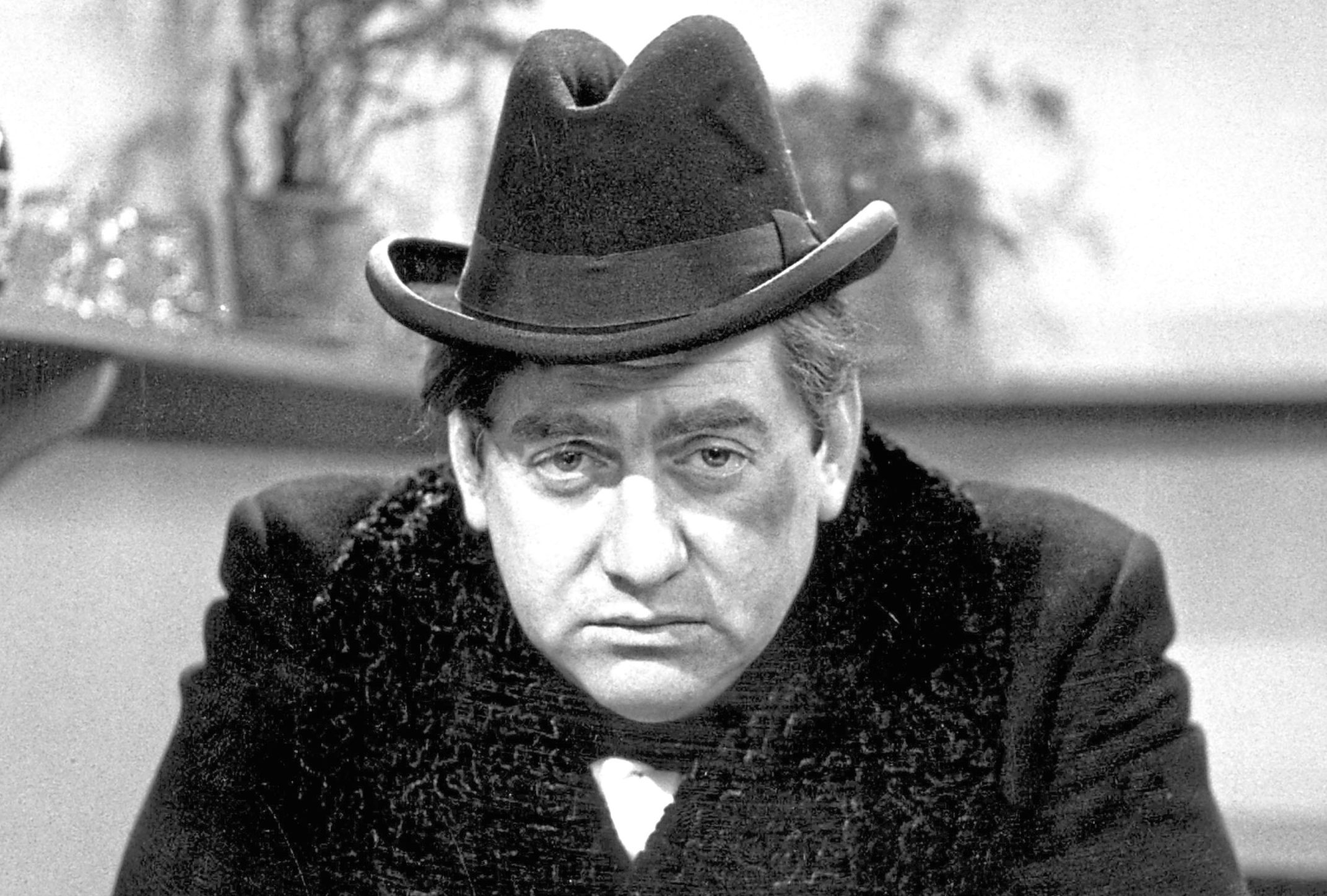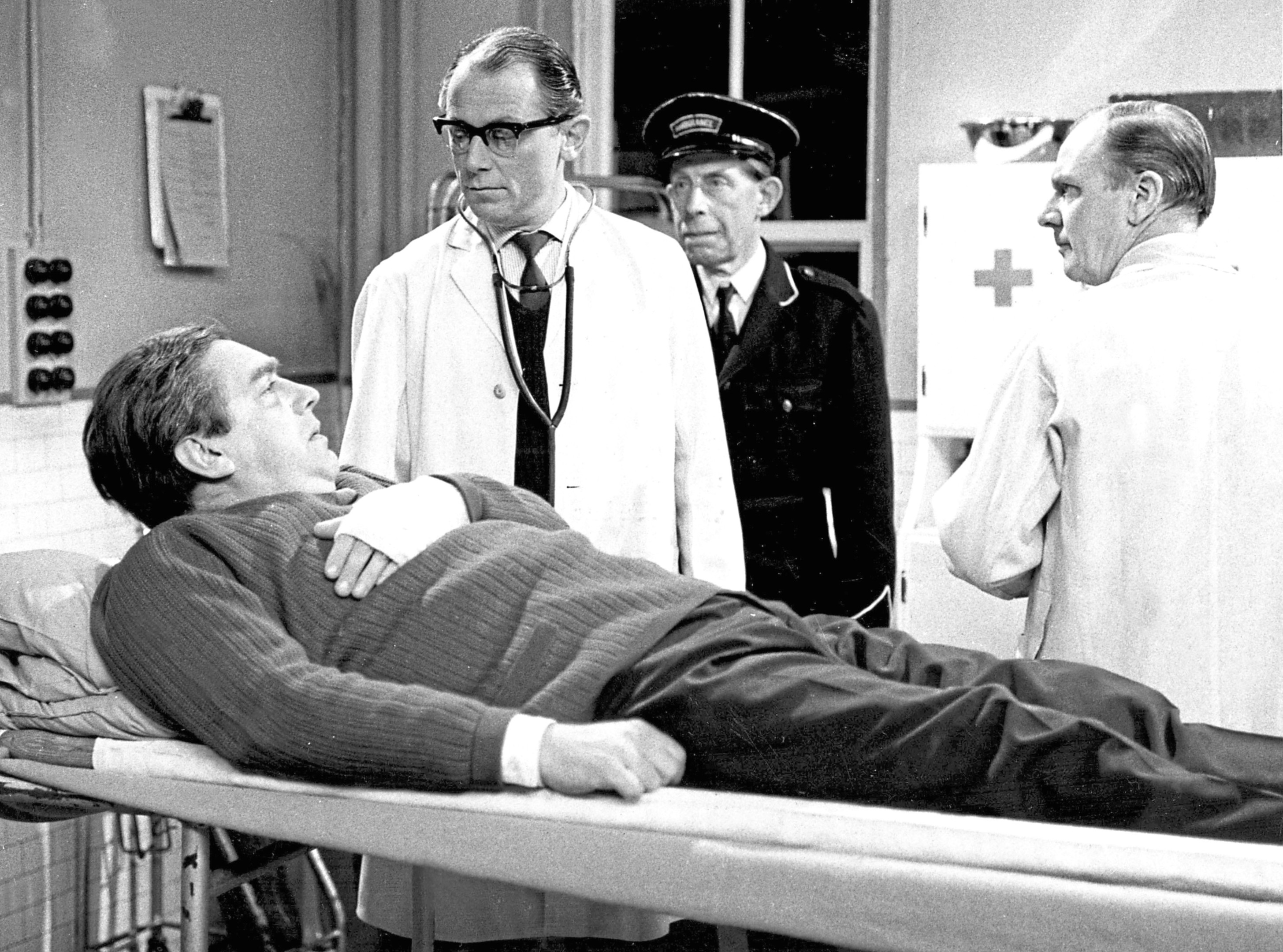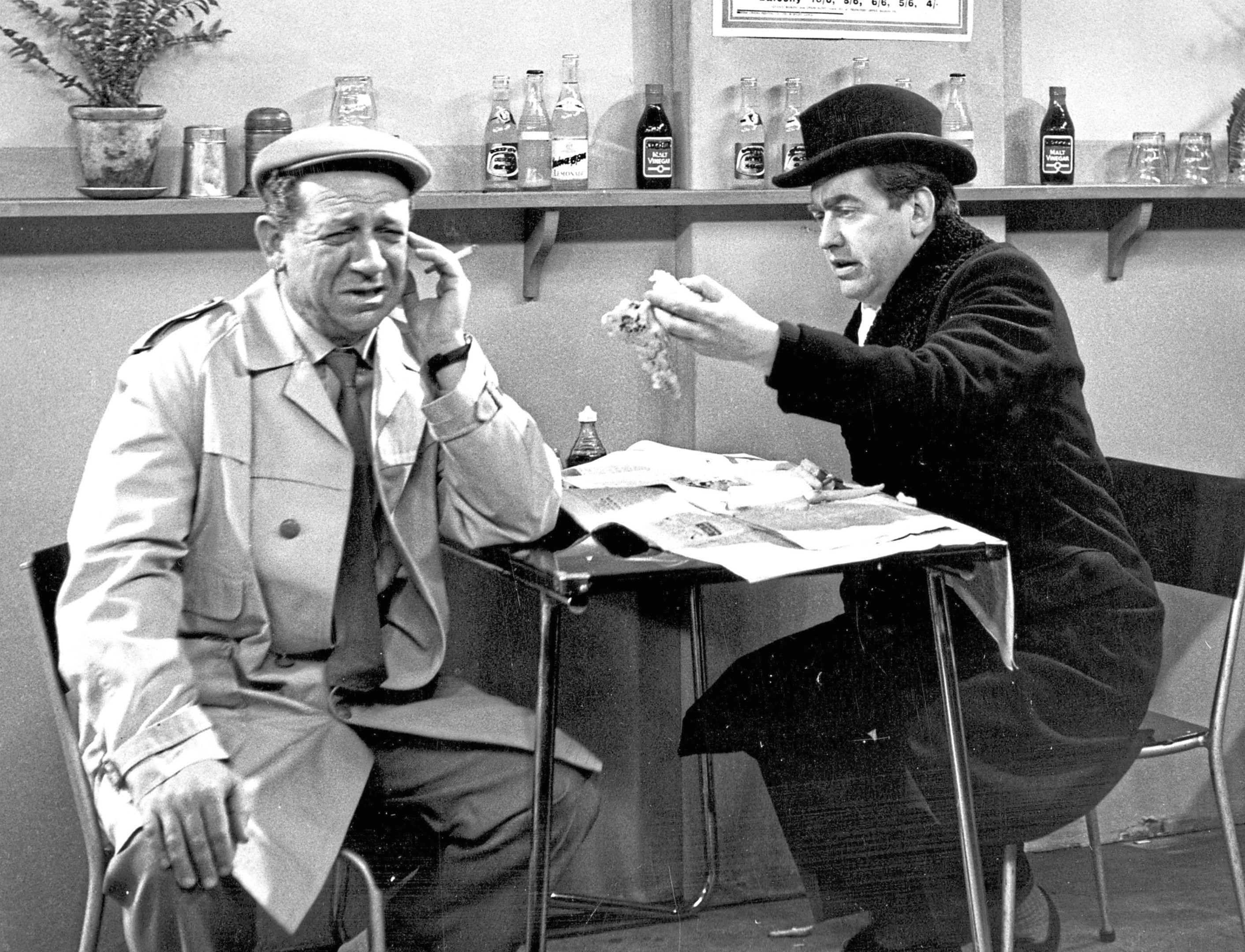
DEAD at just 44, Tony Hancock had squeezed a lot of laughter into an incredible but short life.
Fifty years after his tragic suicide, the late, great comic is still revered by those who saw him in his prime, and by youngsters who learned about the Hancock magic long after he was gone.
Dave Miles, London-born but based in Edinburgh, has idolised the British comedy icon for most of his life, and has written a detail-packed book that will surprise even the most knowledgeable Hancock fans.
And, as Dave points out, it would be nice to remember him at this time – Tony died on June 25 1968 – and perhaps get some new people intrigued.
“I was born in ’63, and my earliest memories of Tony Hancock are from about the age of 11 or 12,” says Dave. “It was my uncle playing an LP, maybe The Radio Ham or The Blood Donor.
“I thought, ‘That’s an interesting voice, that’s quite funny!’ and I was hooked from then on. As I got older, I learned a lot more and saw the brilliant BBC shows.
“Sadly, they are not doing anything this year, which is terrible for such a great guy. I heard they were approached some time back but didn’t seem keen on it.
“I’m annoyed because, if you think about it, Tony Hancock was probably the first really big comedy star.
“Who would I compare him with today? Nobody. He was a one-off, Tony.”
There’s no doubt that Hancock’s influence has been evident in the work of many comics since his time, but Dave points out that Tony’s own influence was a man now largely forgotten.
“Sid Field was another wonderful comedian, also from Birmingham like Tony, who also died at a very young age,” Dave explains, “and Sid was the Guv’nor, the first real stand-up comedian.
“Everyone looked up to him, Morecambe and Wise, Terry Thomas, the old stars. Sid suddenly died of a heart attack just as television was coming into play. Had he survived, he would certainly have had his own TV show.
“Tony adored him, went to see him, and he actually cried when he died, despite not having got to know him. He was bowled over by him and just wanted to be like Sid.”
Another Sid, Sid James, was one half of the double act with Tony that saw them dominate British TV comedy. They eventually went their separate ways, but Dave points out it wasn’t down to any kind of sour grapes or ill feeling.
“Tony and Sid were wonderful friends,” he points out. “Like anybody else in any line of work, if you want to progress you have to move on. Tony was confident and felt he’d had enough of that scenario.
“He felt, ‘I can do other stuff, I can do better stuff.’ You don’t stay with somebody professionally if it’s going to hinder you. Logic tells you that.”
During his run of Beeb radio and telly hits, it’s said that Tony Hancock could clear the streets, as every generation stayed at home to watch or listen to every episode.
The first star to earn £1,000 for his shows and with a massive fan base, he felt he could reach even higher. He would, in fact, enjoy some of his greatest successes after the split.
Drink problems and the fact he was often a troubled man took a lot of the shine out of life, despite all the fame and fortune. He overdosed in Sydney, Australia, and was found with an empty vodka bottle and amylo-barbitone tablets.
“Tony was a tortured soul,” Dave says. “I have studied alcohol and depression and all that stuff. I have my personal views on why Tony decided to leave us so young.
“I’ve been very privileged to have held his two suicide notes in my hand and read them. I started crying because it was quite emotional, holding those in your hands.
“There was one note to his mum, and the other was explaining why he was doing this, with both notes being sent to Eddie Joffe, his producer at the time.”
Dave was keen when writing about Hancock not just to give us the same story, going over old ground. HIs book will give us new insights.
“I’m not going to repeat all that we already know,” he says. “I’ve been very lucky to unravel some new stuff.
“I almost put a book out 10 years ago, but didn’t, and then I thought the 50th anniversary would be the time to do it.”
Dave is understandably cautious about saying too much on what Hancock might have achieved if he had survived.
Not surprisingly, he wants us to buy the book and find out!
“I have been researching this book for about 35 years,” he says. “I was publicity officer for The Tony Hancock Appreciation Society for several years, and did lots of amazing things there.
“The book is my personal journey into the world of Tony Hancock, and I am sharing my memories. There are also tons of unseen photos in it.
“I did a lot of research in Australia and found out other bits that weren’t so well-known. I’ve called the book Spiral, and that is for up and down, not just a spiral down.”
For today’s kids, there is plenty for them to know about the great man before they even sit down to enjoy his shows. Hancock’s Half Hour would then be the obvious place to start.
With great scripts by Ray Galton and Alan Simpson, Hancock’s Half Hour ran for seven years, more than 100 episodes, on radio and TV. Tony played Anthony Aloysius St John Hancock, and lived at 23 Railway Cuttings.
The everyday trials and tribulations of life as a comedian were the general background to the shows, with Hancock desperate to become a serious, straight actor.
“I don’t want any publicity, because you get too many begging letters,” went one of his gags. “If they’re anything like the ones I send out, I don’t want to know!”
He was great at self-effacing jokes, but he could also be an anxious worrier, fretting over life’s meaning.
If only he had known what a fine legacy he would have – as recently as 2002, 34 years after his death, he was voted Britain’s favourite comedian.
In a statement, Galton and Simpson compared his character’s humour to that of Alan Partridge and David Brent.
“They all think they’re more intelligent than everyone else,” they said, “more cultured, that people don’t recognise their true greatness.
“Self-delusion in every sense, and there’s nothing people like better than failure!”
Dave noted: “The book comes out 50 years to the day that he died, and it’s my tribute. I’m not being big-headed, but I have all the books that have come out over the years, and mine is a really nice one.
“I’m a bit of an artist as well, and I have painted a canvas of Tony. That is being unveiled on the same day at 12 o’clock, at the Winter Gardens Theatre, Morecambe.
“That’s a theatre Tony appeared in in 1947, when he was quite young. It is being unveiled by the legendary Roy Walker. He is thrilled to bits and can’t wait to do it.”
And we can’t wait to see a new generation of comedy fans discover, the genius that was Tony Hancock.
Dave’s Tony Hancock book, Spiral, is priced £12.99.
You can order a copy by email, phone or at his postal address – beseeingyouihope@yahoo.com or 07486 604937 or Dave Miles, 33 Raeburn Crescent, Whitburn, Edinburgh, EH47 8HQ.


Enjoy the convenience of having The Sunday Post delivered as a digital ePaper straight to your smartphone, tablet or computer.
Subscribe for only £5.49 a month and enjoy all the benefits of the printed paper as a digital replica.
Subscribe
